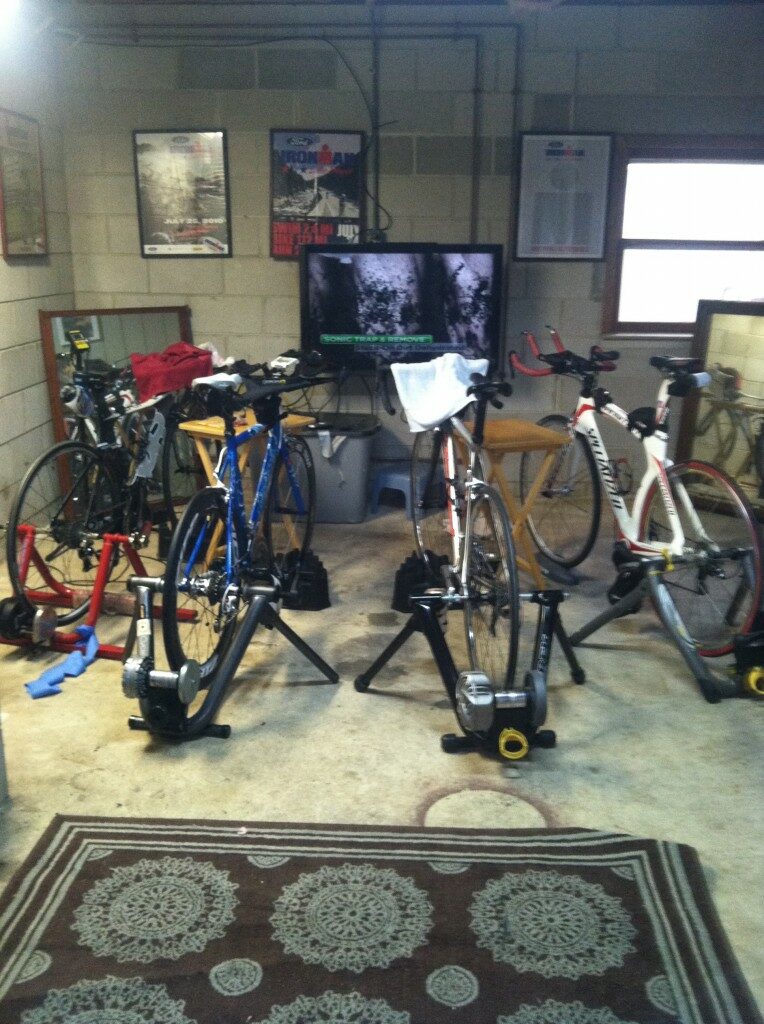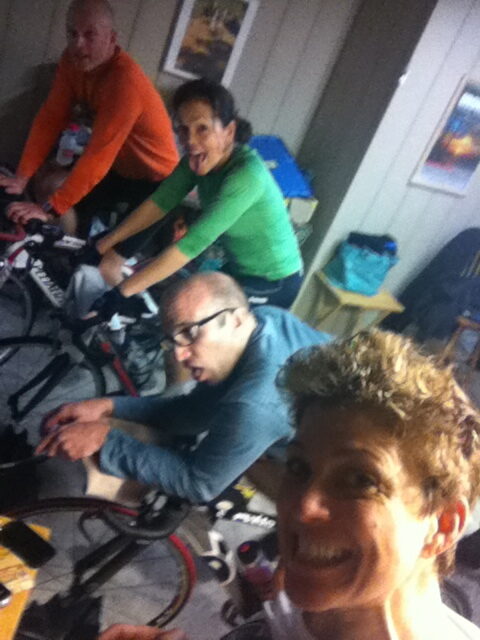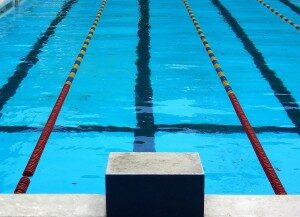
You have a few months until your “A” race of the season, and you are officially in the “base” or “general preparation” phase of training.
Okay, so what the heck does that mean?
In a periodized training plan, the base or general prep phase is focused primarily on building an aerobic foundation upon which you will build into your more race-specific workouts, during the next phase of the training cycle (i.e., the build or specific preparation phase of training).
Depending on the length of your race and your previous endurance history, the base phase can last anywhere 8 to 20 weeks, and your primary focus is on building aerobic endurance, technical efficiency, and strength.
So, what do these types of workouts look like? In this post, we offer an example of a base phase workout from each sport to give you a sense of what these workouts might entail. We also offer options to modify the workout to meet your needs.
Each of these workouts is based on a 5-zone HR system, which you can read about here.
If you don’t have a HR monitor, you can also use rate of perceived exertion, based on the Borg Scale, which you can read about here. For the base period, you would not want your RPE to exceed a 12 for zone 2 efforts.
The Swim
There can be no doubt that success in swimming is strongly related to the efficiency of your form. The base period is the perfect time to work on your swim technique, while also building your endurance. But, let’s face it, long drill sets can get boring and make the workout feel quite disconnected from the actual freestyle stroke. Here’s a workout that many of our athletes like, as it mixes up drill sets with freestyle swimming. The overall yardage of this session can be adjusted by increasing or reducing the number of sets, or the length of each set (e.g., 8 x 100 yards, or 6 x 75 yards).
4 x 50 build to mod-hard/zone 3 effort, 10 sec rest
2 x 150 done as (50 free, 50 kick, 50 free), 10 sec rest
Main
8 x 50, alternate drill and freestyle each set, 15 sec rest
4 x 50 kickboard, 15 sec rest. Work on balance by holding the board out.
6 x 100, alternate drill and freestyle, steady effort, 15 sec rest
Cool
2 x 100 easy, 5 sec rest
Drills can include front balance, side balance, six beat switch, fist drill, finger tip drag, swim golf, single arm drills, swim golf, catch up drill, or any other drill of your choice (do a simple you tube search for any of these drills and you’ll find a great source of “how to” tutorials). Ideally, you will select the drills that work on your weaknesses. If you are new to swimming, chances are your body position and balance in the water is the most important thing to work on. You can read about drills specific for that here (videos also available at this link).
Base Bike Endurance Builder
This bike workout combines some sets for technical efficiency, within a longer endurance ride. It’s specifically designed for riding on the trainer, as many of us are stuck inside on these cold winter days. However, this approach can easily be applied for an outdoor ride. But, we don’t recommend doing single leg drills outdoors – it isn’t very safe. So, you can skip those in favor of some spin-up or high cadence drills.
For those of you that ride watts, you can do this workout using HR or power zones (if you’ve determined them based on a functional threshold power test).

Warm Up
15 minutes, easy/zone 1 to warm up
Efficiency Sets:
5 x 1 minute single leg drill (30 seconds left, 30 seconds right)
5 minutes steady/zone 2
5 x 30 second spin-up drill, with 30 second recovery
(Spin up: Increase cadence until you are at or near your maximum cadence WITHOUT BOUNCING IN THE SADDLE, and maintain for the rest of the interval. Be sure to adjust gearing to avoid an all-out effort. Your focus should be on pedaling efficiently – not on riding hard.)
Endurance Sets:
3 x 30 minutes done as:
– 5 minutes easy/zone 1
– 5 minutes build from easy to low end of steady/zone 2
– 10 minutes build from low end of steady to middle of steady/zone 2
– 10 minutes hold middle to high end of steady/zone 2
Cooldown
10 minutes easy
The duration can be modified by subtracting or adding endurance sets. You also can extend the endurance sets to 45 minutes, done as:
– 5 minutes easy
– 15 minutes build from easy to low end of steady
– 15 minutes build from low end of steady to middle of steady
– 10 minutes hold middle to high end of steady
You can also add additional efficiency skill sets between each endurance set, or do them during the “easy” portion of the set.
The Run
With the run, one of the more important elements of technical efficiency is working on a quick cadence that allows your foot to land in line with your hips. To introduce technical efficiency into any run, you can do a series of drills, including quick foot drills to achieve this form. We recommend 2-3 sets of 30 seconds of running drills before a base steady run. Here’s a great video that explains one version of a quick foot drill:
In addition to drills, we use a modified version of a hill workout to help work on both efficiency and strength. It’s important in doing this workout that you don’t attack with it high intensity – but rather use it as a strength and form builder. We call this workout Fast Downs.
Find a hill with a moderately-steep grade that will take about 4 minutes to climb. We don’t have hills here in South Jersey, so we use bridges, somewhere in the neighborhood of 4-6%. This workout cannot be completed on a treadmill, since the main focus of the workout is the downhill – not the uphill.
Pre-Run
Easy walk or core work to get the blood flowing. Then, do 2-3 sets of 30 seconds of quick cadence drills (e.g., quick foot drill as shown above, g-drill, ankling, ankle springs), 30 seconds rest. Do 5 minutes of dynamic stretching.
Run Warm Up
10 minutes easy (done on flat or flat-ish ground)
Run Sets
Run up the hill at a steady/zone 2 effort for about 4 minutes (doesn’t have to be exactly 4 minutes – just in this ballpark). Then turn around (or go down the other side of the bridge/hill) and run down at a steady to moderately-hard effort (don’t exceed zone 4). As you descend: Focus on quick cadence and light feet, with a slight forward bend from the ankles not the hips. Do NOT let your heel plant out in front of your hips. Work on maintaining a midfoot/full foot landing just under your hips.
As you run downhill, count how many times your right foot hits the ground in a 30 second period. Times this number by 2 and that is your cadence for 60 seconds. You ultimately want to get to 90.
Continue in this uphill/downhill pattern for 30 minutes.
Cool down with a 5 minute easy run or walk.
This type of workout can pack a big punch on your body if you hit it too hard, so it shouldn’t be done more than once a week, and maybe even once every two weeks depending on your training history. The point of this workout is not to run as hard as you can, but to build strength and work on form. If you are running too hard, you won’t be able to concentrate on those goals. This approach to downhill running can help you as you work on a quick turnover, but it can also mess with your knees. So, be cautious and run with good form. Your focus should be on good form – not necessarily running hard. The form is much more important than the effort.
As you progress, you can gradually and carefully increase the duration for the main sets. But, even if you just stick with 30 minutes, you will still get great benefit from this workout as it relates to both strength and efficiency.
For those of you with races that have significant downhill portions, you can adapt this workout for the build or race-specific period by adjusting the intensity and the length.
If you have questions about any of these workouts, and how to incorporate them into your base training, feel free to contact us.

